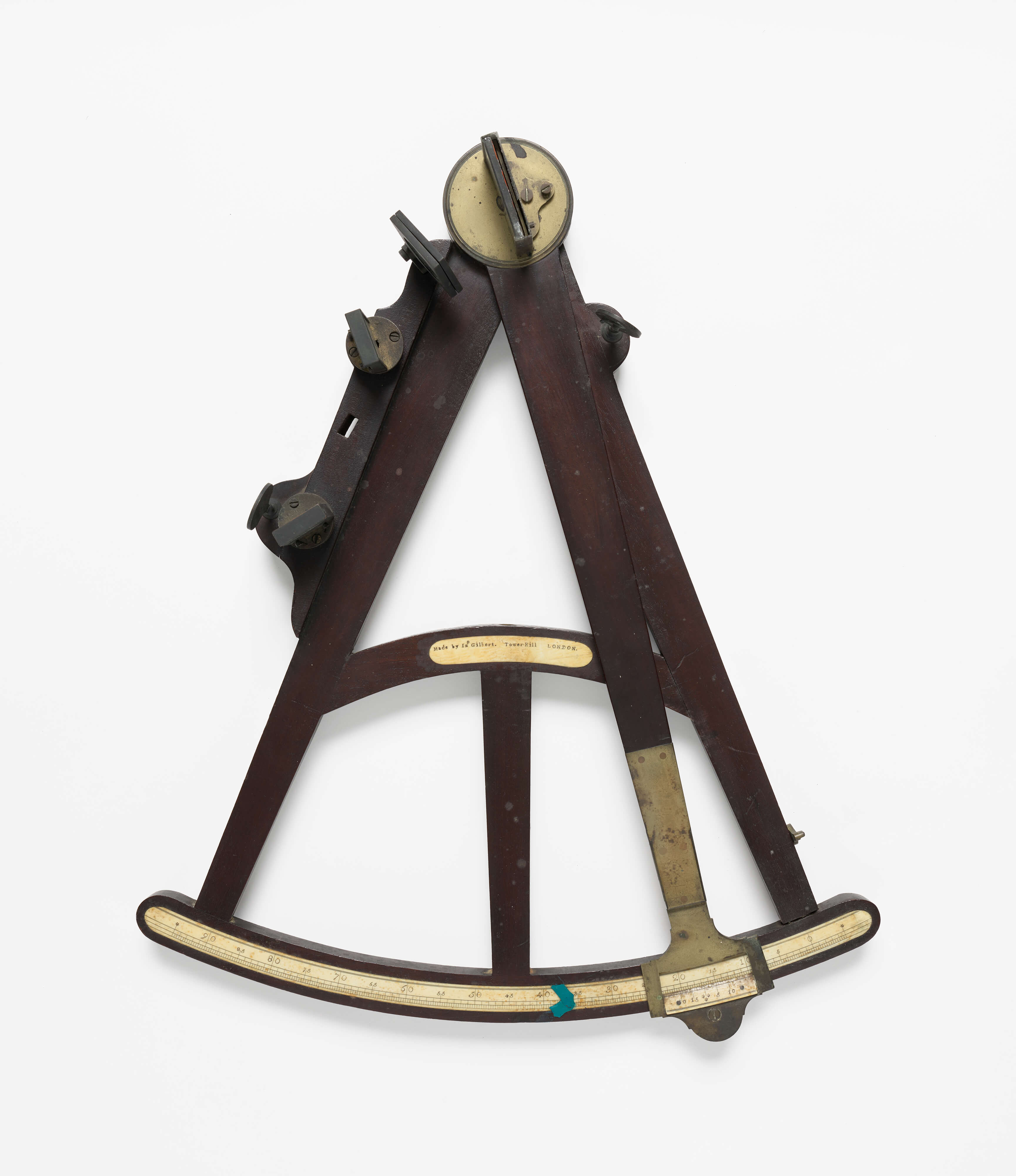

Octant
In the late 18th century, navigators began to use octants to determine their latitude. The octant helped navigators find the precise height of the sun (or, at night, the height of a star) above the horizon. Holding the instrument upright, a navigator would look through the sight, which consisted of one transparent glass window and one mirror. He would first line the instrument up with the horizon by looking through the glass window. Then, he would slowly move the measuring arm, which was attached to the mirror, until the mirror reflected the sun. The resulting measurements on the octant allowed the navigator to calculate the altitude of the sun. By looking up the date and the height of the sun in an almanac, the navigator could then find his ship’s latitude.
The embossed name plate on the octant has an engraving reading: “Made by Jno Gilbert. Towerhill London.” John Gilbert was a British scientific instrument maker who worked in the second half of the 18th century. The frame of the octant is wood, while the inlaid scale is ivory and the movable arm and fittings are brass.
Creator
John Gilbert
Date Created
late 18th century
Medium
Brass, Glass, Ivory, Wood
Dimensions
[H] 18 in. [W] 14/5 in. [D] 3 in.
Catalog Number
2525.3
Credit Line
USS Constitution Museum Collection. Gift of Roberta Lang on behalf of her brother, Edward Louis Bonacci.
Terms of Use


This work is licensed under a Creative Commons Attribution-NonCommercial-NoDerivs 3.0 Unported License